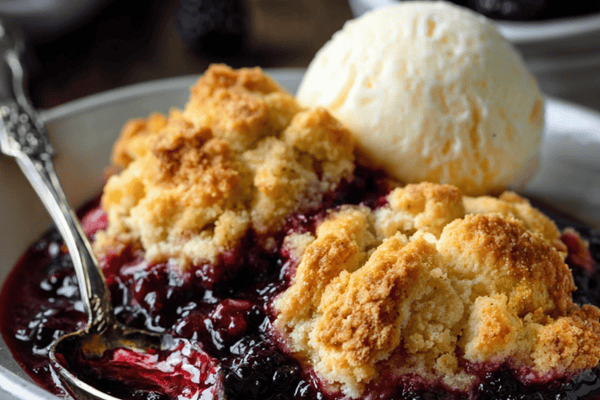
Investing in Japanese knives is usually motivated by one of two things: a desire to have the best knife possible (which many consider Japanese knives to be) for professional use, or for the aesthetic appeal that comes with these carefully crafted and traditional products.
What people often don’t take into consideration, however, is that these knives are created to such a high standard that a proportionate level of care and maintenance is needed for them to maintain this quality over time.
A Western-style, stainless steel chef's knife as an example, is designed to be easy to maintain. You can wash them in a dishwasher, sharpen them on an electric knife sharpener and store them with other utensils without worrying about rust, scratches, or dulling the blade.
A Japanese knife is the opposite and we’ve therefore put together this guide that covers not only the importance of Japanese knife care but also everything you need to do to maintain the quality of these kitchen assets.
Table of contents
The Importance of Japanese Knife Care

Japanese knives are widely regarded to be the best in the business for food preparation and also for culinary art. While an ultra-sharp cutting edge, high-quality carbon-steel blade, and specially designed handle all create an aesthetic and performance-driven knife, these are notoriously harder to care for than a Western stainless-steel knife.
When investing in a quality Japanese knife, you will therefore need to plan and ensure that you can give it a dedicated level of knife care. Below, we will explain some useful Japanese knife care tips as well as some key things to avoid.
Using Your Knife
When it comes to actually using the knife, there are a few things to look out for. Firstly, we advise that you use a wooden chopping board. Or, at the very least, avoid using stone, glass, or ceramic chopping boards.A good rule of thumb is that metal-on-metal is bad as striking hard surfaces will dull and even chip the blade. Critically, contact with surfaces that are harder than the blade itself will damage the cutting edge of the blade.
Something to avoid, regardless of the type of chopping board, is scraping up your food with the cutting side of your Japanese knife. It is a bad habit to adopt and one that will quickly dull the blade. Instead, use the spine or tip of the knife if the blade design allows it.
Always ensure that you are using the appropriate knife for the task at hand. For example, a Santoku is a great all-round Japanese chef knife with multiple cutting uses. By contrast, you would not use a Nakiri for filleting a fish or a Yanagiba to peel a cucumber.
Another top tip when using your Japanese chef knife is to wipe your blade clean as you go. Particularly with acidic foods such as fruit, onions, or tomatoes, the acidity from the food can corrode the carbon steel if left on for too long. The easiest and safest way is to fold a damp hand towel into a pad shape that you leave on the countertop.
Cleaning

Keeping on top of cleaning your Japanese chef knife is fundamental in maintaining its quality. Your knife should be hand-washed (with the sharp end pointing away from you) using a mild detergent. After cleaning your knife by hand, good chef knife care necessitates that you thoroughly dry your blade immediately after with a hand towel.
Japanese blades are often prone to rust when left to air dry and that is why towel drying immediately after washing the knife is essential.
Never, under any circumstances, place Japanese knives in a dishwasher. The high temperatures and moisture in a dishwasher cycle can cause the wood to warp, the carbon steel to corrode, and the blade to splinter and dull from banging against other utensils.
It goes without saying, then, that you should never leave your knives in the sink or anywhere where they are soaking in water. Also, having knives in your dishwasher is dangerous and could pose a risk to the person who empties it.
After frequent use over a period of time, you may notice that your knife appears slightly rusty (which is especially common when left to soak or after being used in a dishwasher as we know some people will still do this by accident or because they didn’t know any better).
Fear not, rust is a rather normal process of oxidation. This can be combated by rubbing salt and lemon on the knife to try and restore its original appearance.
We recommend you only do this once in a while as you do not want to erode the metal. If you notice rust appear on your blade, try using coarse wire wool with hot soapy water.
If you want to take your knife maintenance to the next level, rubbing a cold-pressed cooking oil into your wooden handle every so often may refresh the natural grain and color of the wood.
Maintenance

Japanese knives are known to be more delicate than typical Western knives as they are made from a harder yet more brittle carbon steel that holds a much sharper edge, yet it is also more prone to chipping.
The carbon steel typically used in a Japanese chef knife is prone to rust and corrosion, so it is advised that you do not store your knives in atmospheres that are high in moisture and humidity.
Keeping on top of sharpening your blade is important, but refrain from doing this too often and too excessively as this could wear the blade down to the point of being no longer fit for purpose.
Over-sharpening can cause the edge to become too thick by wearing down into the thicker part of the knife. A brand new Japanese knife should not need to be sharpened for a few months once removed from the packaging anyway, (depending upon the frequency of use and how well you look after your blade).
If you have invested in a Japanese knife, or even if you are thinking about investing in one, it is worthwhile learning how to use a whetstone properly. We recommend that whetstones are the best choice when it comes to sharpening your Japanese knives. When used correctly, they are a trusty and reliable implement that provides the best results for sharpening the Kireha (the cutting edge) of the blade.
Once you have sharpened your blade, immediately wash or wipe down the edge. Sharpening a Japanese knife produces tiny bits of metal that you want to wash away before returning to the chopping board.
Storage

Japanese knives necessitate a dedicated storage place that serves to keep their edges unblemished and maintain their longevity. When you are not using your knives, avoid resting the knife on the cutting edge in storage (this goes for both knife blocks and knife drawers).
We also recommend that you are best keeping your knives away from other kitchen utensils. This way you minimize the risk of the knife-edge clipping or bashing something that could lead to damage.
There are several storage options available for a Japanese chef knife.
Knife blocks are an ideal way to store your knives, but they are also known to be unforgiving on cutting edges so be sure to use these with caution. On top of this, the slots in a knife block can quickly develop mold and bacteria, so be sure to thoroughly dry your Japanese knives when storing them in a block.
If you are using a knife block, make sure to clean it regularly with a damp cloth and give it a shake to get rid of any debris that has gotten into the slots. Also, make sure to never drag a Japanese knife edge on the slot of a knife block when inserting or removing for use.
A dedicated knife drawer is also a practical choice of storage that is discrete too. Knife drawers can also collect debris so make sure to clean them regularly.
A magnetic knife rack or block may be the best investment for you to house your Japanese knives. Apart from their aesthetic qualities, they are also highly functional and seamlessly complement your workflow.
Blade Protectors

Blade protectors are an essential investment when it comes to protecting the cutting edge of a knife.
Particularly for travel or in-drawer storage, these magical accessories enable you to store and carry knives without having to worry about them clattering around and damaging the delicate cutting edge. They are also highly versatile as they enable chefs to safely transport their knives around.
When purchasing blade protectors, be sure to look out for ones that fit the blade correctly. For example, if the 'protector' is too short and the sharp edge is sticking out, it defeats the purpose of having them in the first place.
For your Japanese chef knives, we recommend that you invest in genuine Saya’s. A Saya is a wooden stealth that ensures maximum protection for your blade. Think of them as a mini knife block for each individual knife.
If you are storing your Japanese knife in a drawer, always use a Saya or other suitable knife protector. Remember that your Japanese knife is delicate and being tossed in a drawer with other kitchen utensils without protection is careless and can quickly ruin the quality and performance of your knife.
Safety
Do not leave your knives lying around, especially near the edge or corner of a countertop. It is a simple principle but carries extra importance when factoring in how sharp Japanese knives are and how easily they could cause injury.Leaving knives on draining boards (where they can get banged against other utensils) or near the edge of countertops (where they can be knocked on to the floor) are big no-nos for the sake of both the knife itself and the chef.
A blunt knife is generally considered to be more dangerous than those with a sharpened edge. This is due to the fact that the user has to apply a greater amount of pressure to the object being cut into and the smoother blunt edge means the knife could slip sideways.
Regularly honing and sharpening your blade is therefore a crucial aspect to ensure that it’s sharp enough to effortlessly pass through the food when cutting.
Finally, always ensure your knives are safely stored away when not in use. This is to prevent accidents or damage to the knife and is also something that is even more important for parents with young children.
Final Thoughts
In this guide, we have outlined some common and useful solutions for taking care of your Japanese chef knives.We’ve tried to cover all of the things you should avoid doing as well as mentioning everything that you should do to maintain the quality and performance of your Japanese knives.
While this list is quite extensive, we recommended looking into each topic in more detail and have covered these aspects in great detail on this site from the best storage options to in-depth blade maintenance.


